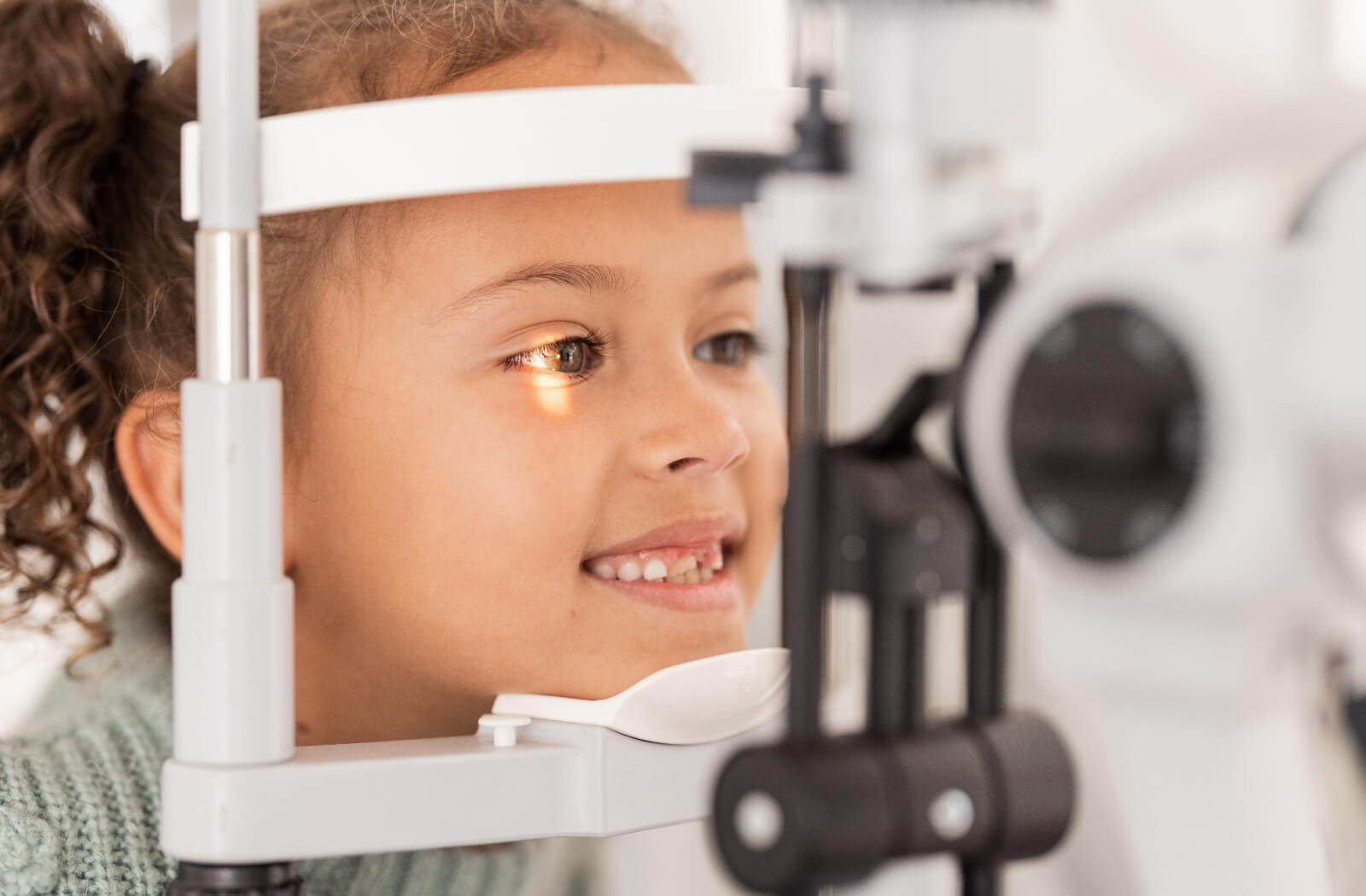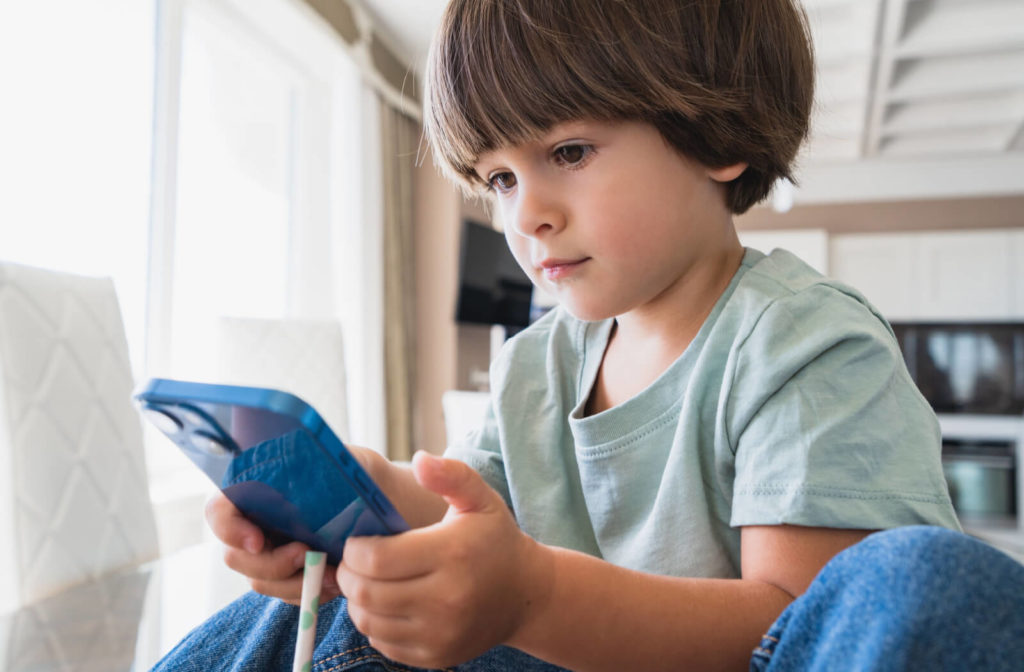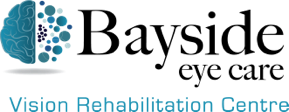Lazy eye, or amblyopia, is a common vision condition that often develops in childhood, where one eye has weaker vision than the other. Timely diagnosis with routine children’s eye exams can help promote healthy vision development in children.
But when is it too late to treat lazy eye? While the optimal time for treating lazy eye is early childhood, advancements in optometry and vision therapy can offer vision improvements into the teenage years and adulthood.
What Is Lazy Eye?
Lazy eye occurs when vision in one eye doesn’t develop the same as the other and it becomes weaker. It usually happens in just one eye, however, it can affect both eyes. Lazy eye usually develops in young children and can be detected as early as preschool age.
Causes of Lazy Eye
Lazy eye develops because of a breakdown in the brain-eye connection. Strabismus, or crossed eyes, is one vision problem that can lead to lazy eyes.
In strabismus, one eye fails to line up with the other eye. The straighter eye becomes dominant, and the brain starts to ignore signals from the weaker eye, prioritizing the stronger eye. Eventually, the weaker eye can become suppressed and develops into a lazy eye.
Other causes of lazy eye can include:
- Droopy eyelid: Anatomical or structural problem that blocks vision.
- Pediatric cataract: Cloudy lens that can develop in babies and children.
- Refractive errors: Severe nearsightedness, farsightedness, and astigmatism that can make vision blurry.
Symptoms of Lazy Eye
Children may not mention vision problems if they’re unaware of what normal vision looks like. However, a teacher or parent may notice some signs as an indicator of a vision problem like lazy eye:
- Squinting
- Shutting one eye
- Tilting their head
- Poor depth perception
Risk Factors for Developing Lazy Eye
Children can be born with lazy eye or develop it later in childhood. Children have a higher risk of lazy eye if:
- They are born premature
- They are smaller than average at birth
- They have a family history of lazy eye, childhood cataracts, or other eye conditions
- They have developmental disabilities
Diagnosis of Lazy Eye
The first few years of a child’s life have many visual development milestones. Lazy eye is often only diagnosed during routine eye exams before children start school, but it is recommended that children visit their family optometrist more than once before school starts.
Assessing a child’s eye focusing power, eye tracking, and eye teaming determines if they have the necessary visual skills needed for seeing clearly in learning, sports, and social activities. Early diagnosis of lazy eye can significantly improve the chances of successful treatment.
When Is the Best Time to Treat Lazy Eye?
The brain is most adaptable during early childhood, making it a critical period for vision development. Children reach visual maturity around 8 years old, which means that up until then, the brain is more receptive to visual input, making it easier to correct lazy eye.
Typically, the earlier the treatment, the better the outcome. But this does not mean that treatment is impossible beyond this age. Evidence shows that attempting to treat lazy eye in older children is always worthwhile, and many children will experience visual function improvements.
Studies show that older children also respond to lazy eye treatment. 53% of children aged 7–12 years showed a treatment response. And 47% of children aged 13–17 years, not previously treated for lazy eye, showed the same outcome as children aged 7–12. Even adults can undergo vision therapy treatment for lazy eye.
Treatment for Lazy Eye
Treatment for lazy eye can vary depending on the severity. The success of lazy eye treatment also depends on many factors, such as the severity of the condition, other existing eye conditions, and patient compliance in wearing glasses, patches, or participating in vision therapy exercises.
After an eye exam, your eye doctor can determine the best treatment options, which can include:
- Glasses: Prescription glasses for uncorrected refractive errors to promote equal visual input from both eyes.
- Vision therapy: Vision therapy exercises can further enhance eye coordination and focus.
- Eye patches: Wearing an eye covering over the stronger or unaffected eye for several hours a day forces the weaker eye to work harder, thus strengthening the brain-eye connection.
When to See Your Eye Doctor
It’s never too late to seek professional guidance if you suspect a lazy eye or experience changes in your vision. Your eye doctor can assess your vision and develop personalized treatment plans. Even if your child has missed the early detection window, scheduling a comprehensive eye exam is the first step toward understanding their visual health and exploring available treatment options.

Vision Treatment Beyond Childhood
While early detection and treatment are ideal for treating lazy eye in children, treatment later in life can still improve vision. Early detection and intervention remain the cornerstones of successful lazy eye treatment.
Whether you’re a concerned parent or an adult experiencing vision changes, book an appointment for a functional vision assessment with Bayside Eye Care. With the right treatment plan and dedication, you can see significant improvements in your vision.



